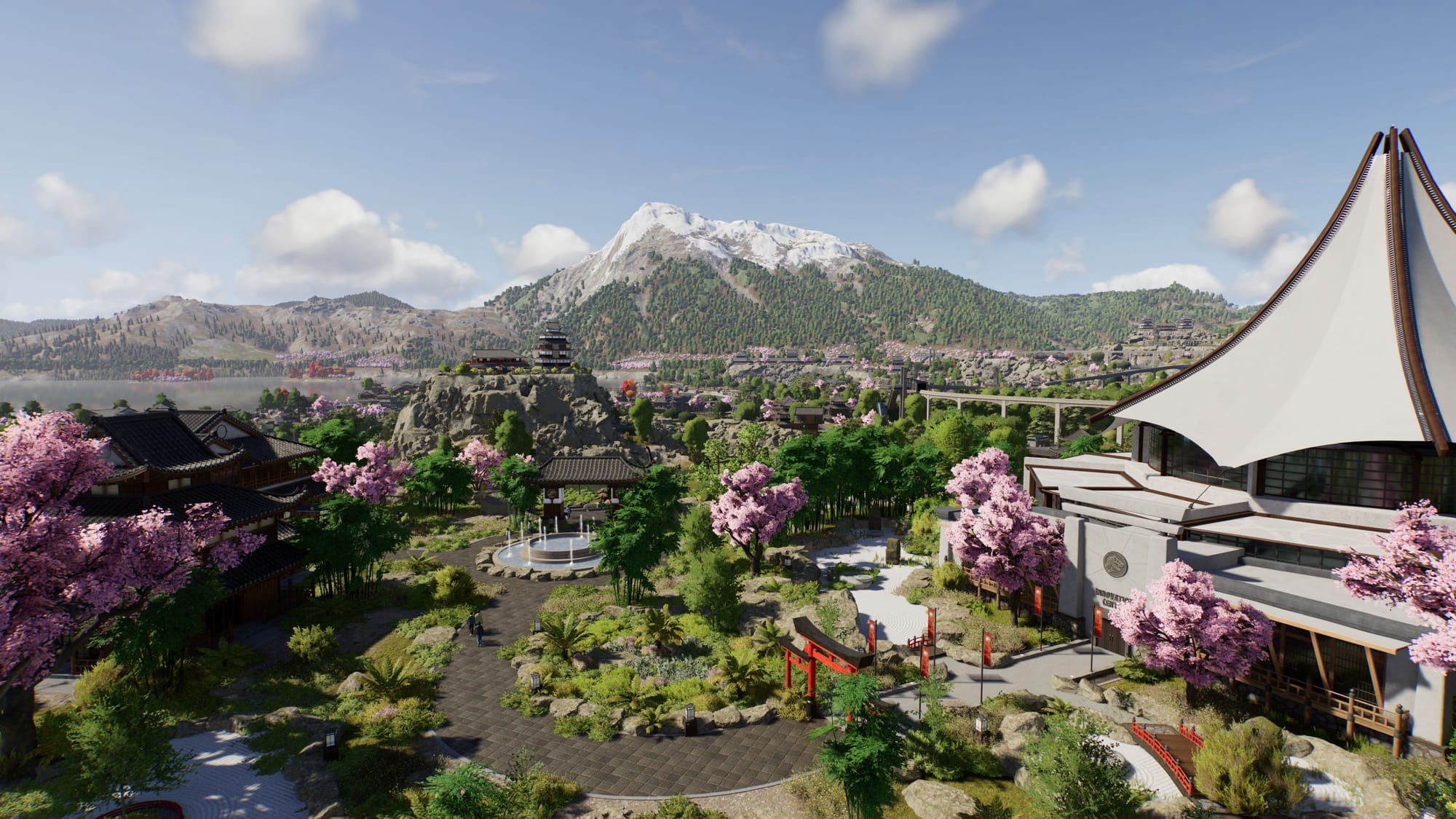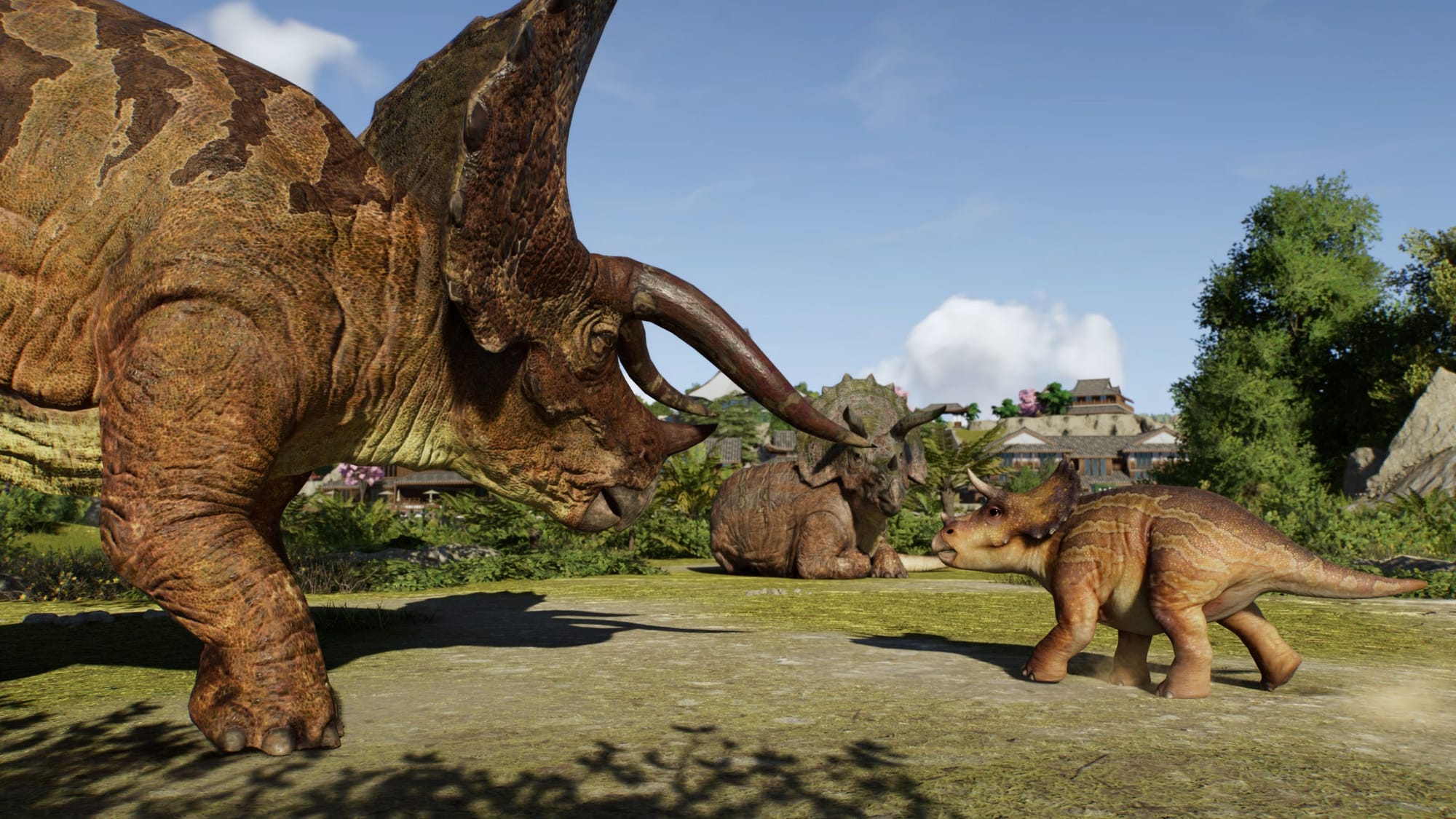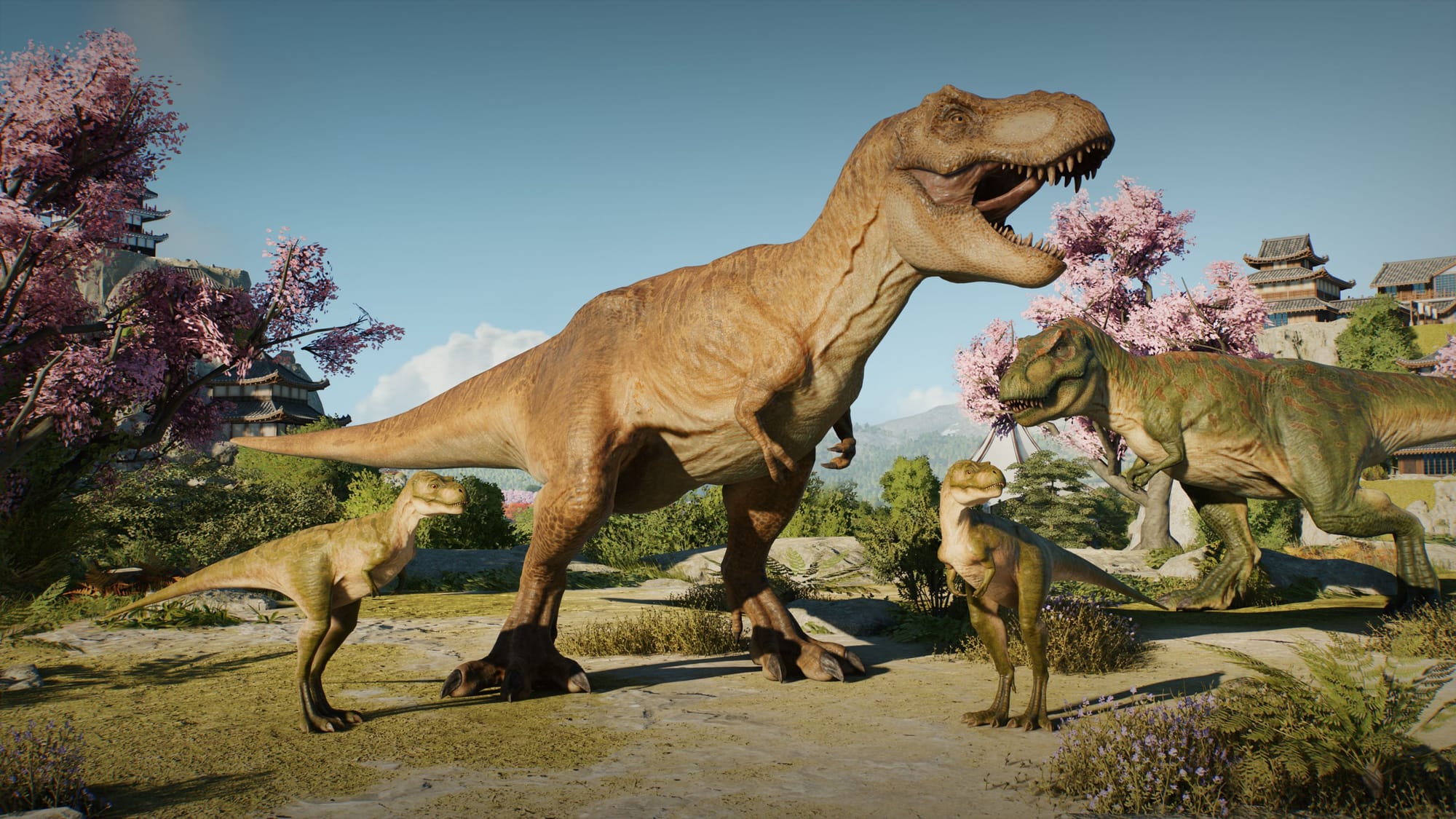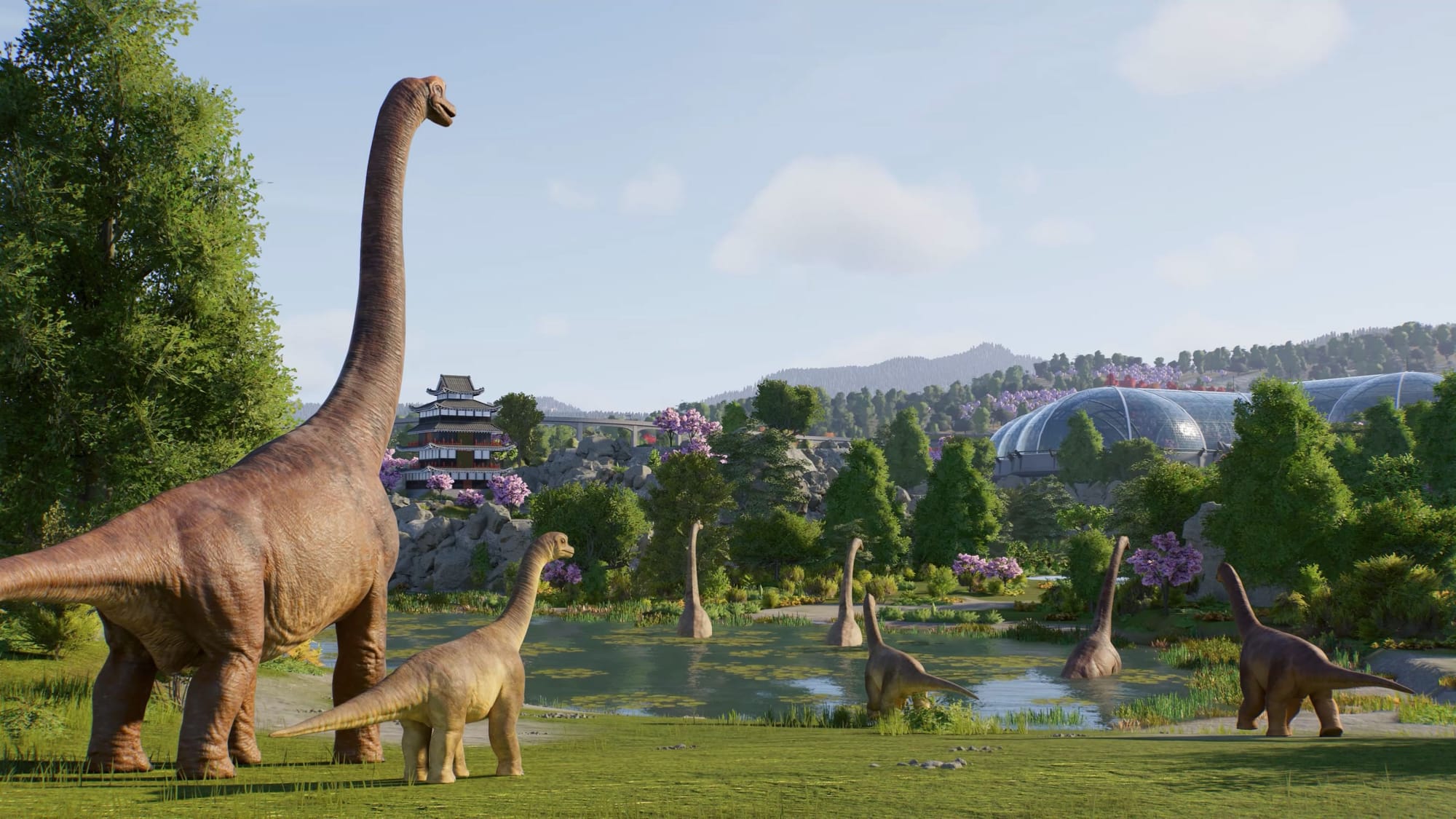
If there’s one thing that always brings me to my cozy place, it’s building theme parks. I’ve loved every second I’ve put into building in the game Planet Coaster and its sequel. I’ve also enjoyed seeing those same systems come to life in that game’s more dangerous cousin - Jurassic World Evolution 1 and 2. When I got an invite to check out the first looks at Jurassic World Evolution 3, I was all sorts of excited to see what new prehistoric species I’d be bringing to life.

The Jurassic World Evolution series has always been about bringing together the past and the present, showcasing park building, but also the awe-inspiring responsibility in bringing dangerous creatures face to face with an audience of adoring guests. You, as the park owner and operator, have to responsibly synthesize them from the amber containing their DNA, breed them into healthy creatures, and then nurture them throughout their life. That means keeping them safe from one another, feeding them, and handling any genetic and health issues that might also arise. As a wise man once said “We have all the problems of a major theme park and a major zoo and the computers aren't even on their feet yet.”

Where Jurassic World Evolution 2 took us to familiar locations like the original park, San Diego, Isla Sorna: Site B, Isla Nublar, and the Jurassic World park, Jurassic World Evolution 3 takes place in all new locations. The world is trying to co-exist with dinosaurs, and that leaves you travelling the world to locations such as the Montana Badlands, Japan, and Malta, just to name a few. As part of a group called the Dino Integration Network or DIN (C’mon…couldn't find an O for that? It’s right there!), your job is to help not only ethically conserve these dinosaurs in an ethical manner, but to also help them as they integrate into their new ecosystem, alongside humanity. Naturally, long-running voice of the series, Jeff Goldblum, returns as part conscience and guide to the player as they come to grips with a world transformed.

There are a number of wonderful new dinosaurs in the game, over 80 in fact. 70 of these can be bred, hatched, and nurtured. That’s right – you now have to contend with the males of the species. The male dinosaurs carry new markings and traits not ever seen in the series, such as pronounced horns, larger sails, or unique markings. These can be passed onto babies – another new item for the series. These juveniles can be bred naturally, or you can get in there and tinker with them for more guaranteed traits. If you’re that type, it also makes them more valuable to sell. Within this new system is a fresh visualization system that’ll let you “try before you buy”, seeing what each element of tinkering might bring. To give these dinosaurs the privacy to breed, you’ll need to also get them a new type of structure – nests.

We’ve always had to keep our dinos happy to get them to settle into their environment, but now we need to make sure they’re thriving and meeting their needs enough to ensure they will bed down. These nests are tied to new preferences such as whether they have a want to cohabitate, be further away from dinosaurs or guests, and more. A new fertility graph shows their overall ability and desire to produce progeny, based on available nests, having a compatible mate, their health, whether they bred recently, their age, and more.

Another usage for the nests is to create breeding programs. Outside of natural breeding, you can put your finger on the scale to create a structured breeding program for fun and profit. This means trying to shove dinos together to gain specific traits and outcomes. Maybe those eggs end up for sale? Maybe you splice their DNA to tinker to get the result you want. Either way, juveniles come out, all cute and zoomie from the other end of your meddling, and that makes it all seem worthy of the effort.
The baby dinos run and play, chasing each other and their parents. They follow and interact with those parents and other dinos, engaging in social interactions as they explore their environments. These little guys have their own wants and needs. Perhaps they can’t reach high enough to get the leaves their parents can, and you’ll need to help fill that gap.

Helping with keeping your extensive park up and running, there are a number of much-requested quality-of-life improvements coming our way. Breakouts happen, and your dinos are happy to unleash a little chaos. A new security camera will allow you to keep an eye on things, with a first-person perspective and a view cone to confirm visibility. A new response team monitors those cameras, able to drive around in jeeps and on ATVs to re-capture those dinos and then chopper them back to their enclosure. Another new team, the maintenance crew, will also come out and repair the breaches in your fences, as well as repairing other broken structures, resupply power units and backup generators, and much more using Supply Posts – another new facility.
Beyond the dino improvements and QoL upgrades, there are a number of fantastic uplifts coming to the facilities and environmental manipulation engine. We’ve always been able to push and pull on the environment to create hills and valleys, paint in foliage, and create exactly the park layout you could want. The team wanted to take this to a new level for Jurassic World Evolution 3. Buildings come in pre-built varieties as before, but now you can reconstruct them bit by bit, making just about anything you could want. Borrowed from games like Planet Coaster 2, you can now build a structure out of whatever elements, including walls, roofs, fences, and whatever else. These elements can be moved freeform, and manipulated into obtuse angles and attached, but now they can also be scaled up and down and used as decorations. Want to use a rescaled giant T-rex skeleton as a topper for your steps? Go nuts.

This evolution has extended nicely to the already-impressive terrain painting engine which has evolved repeatedly between Planet Coaster, Planet Zoo, and the Jurassic World Evolution series. Blending, environmental naturalization, and complex magic that brings things to life, now has a new ace up its sleeve – waterfalls, and deep water. While the engine and this terrain system now supports better verticality, environments can now get deep lagoons. More than just cosmetic, deep water is now a requirement for some dinos. Using a Spinosaur as an example, the team used the digging tool to create a deep pond – a requirement for the health of these creatures. You see, they hunt for fish in deep water. Wading out into the pond, we see them start to kick and paddle through the water, dipping down to get fish and eating. We only saw this last feature briefly, but my brain is already churning with Mosasaur-sized possibilities.
You never expect a third installment to carry much more than safe updates, but it’s clear that developer Frontier isn’t happy to rest on their laurels. Jurassic World Evolution 3 is shaping up beautifully to create entirely new ways to raise our super-sized creatures, and then create compelling and beautiful parks to display them for our guests ethically. Best of all, we won’t have to wait long – Jurassic World Evolution 3 ships on October 21st for PC, PS5, Xbox Series X|S, and we can only assume Switch 2.
Stay tuned right here at GamingTrend.com for all of the Summer Games Fest news, previews, and exciting developments, as well as our eventual review for this one.
